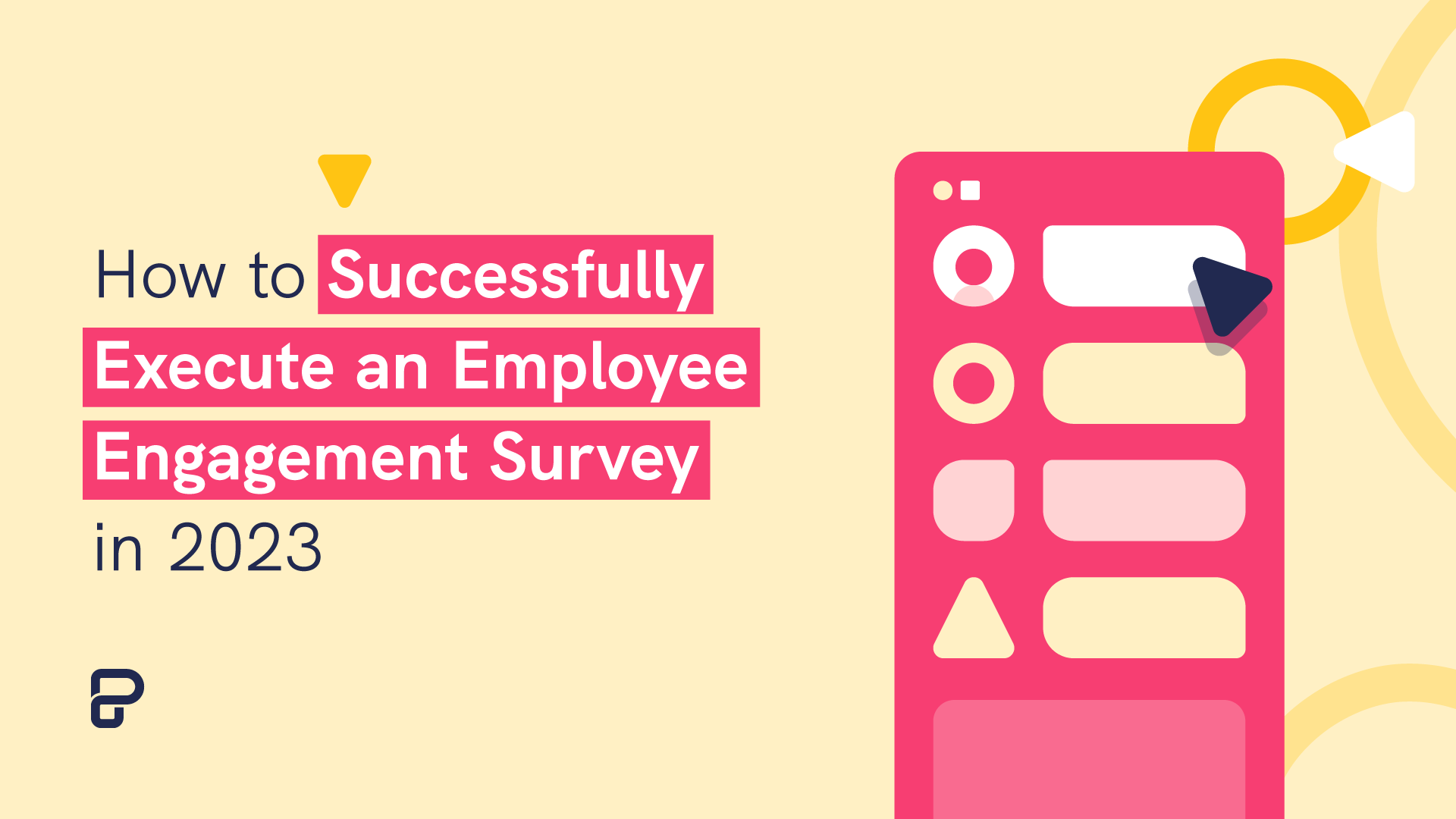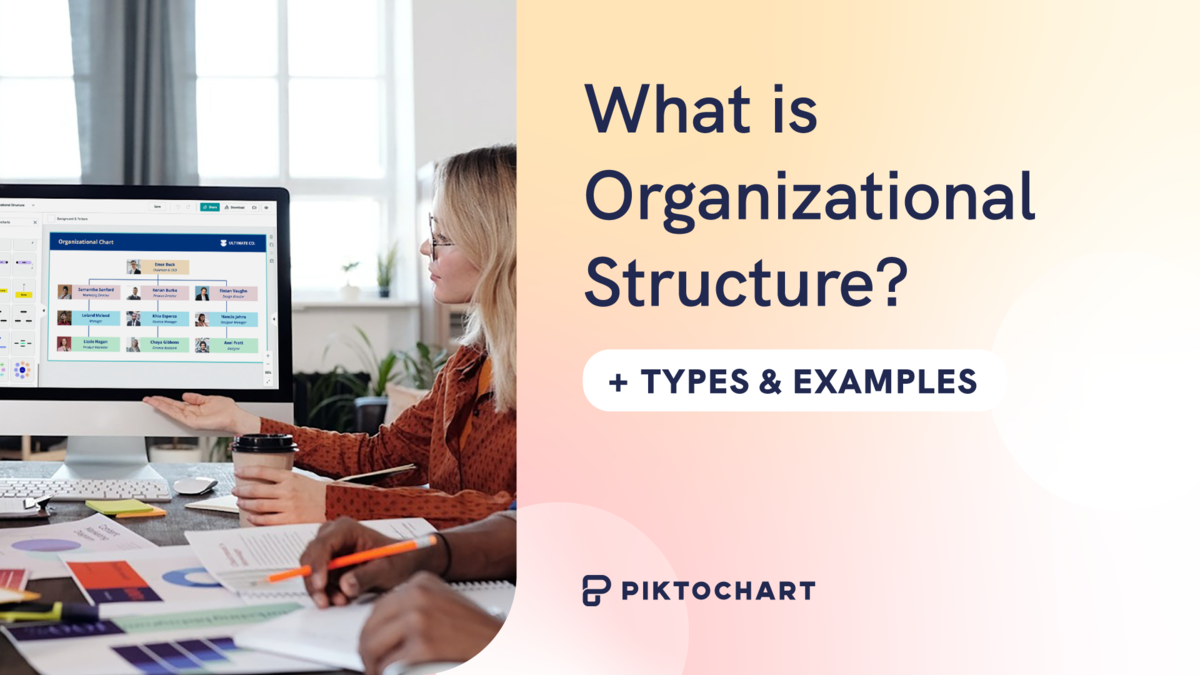The Gallup survey of roughly 67,000 people in 2022 found only 32% of workers are engaged with their work compared with 36% in 2020.
In today’s increasingly remote and dynamic work environment, assessing and maintaining employees’ engagement levels is more crucial than ever before. As we traverse through the year 2023, gaining genuine, actionable feedback from your team members can serve as a compass guiding your organization towards greater productivity and satisfaction.
But the question remains: how do you create a survey that truly engages your employees and provides your company with insights to shape its future?
As a CEO of a company for over 10 years, I’m going to spoil it for you:
The answer lies in dedicated planning, thoughtful execution, and a commitment to implementing improvements.
Let’s take a deep dive into the intricacies of effectively executing an annual employee engagement survey this year – one that not only measures engagement levels but also fosters them. After all, what better way to celebrate your team’s success than ensuring their happiness and growth?
Table of Contents
- Why use surveys to measure employee engagement?
- What are the questions to ask in employee engagement surveys?
- How often should you survey employees?
- How do you increase survey response rate?
- How do you analyze the survey responses?
- How do you formulate the action plan after measuring employee engagement?
- Tools for employee engagement survey
- Free templates to visualize your employee engagement survey results
Why use surveys to measure employee engagement?
Piktochart employs a twice-a-year employee engagement survey. We have gone through multiple designs in the past years. But this is why we continue to run it.
Surveys are a valuable tool for organizations gathering comprehensive and essential data directly from employees. They provide insight into the health of the organization and identify potential areas for improvements.
Benchmarking helps organizations measure progress over time, define the impact of strategies, and assess if changes improve the overall situation. Engagement surveys involve employees and make them feel involved in decision-making processes, both drivers of engagement, which is crucial for overall organizational growth.
Evaluating areas of employee satisfaction or dissatisfaction could impact productivity, employee performance, and employee turnover.
You can browse through our designs for survey reports from our template gallery. These are fully customizable templates, so you can easily use them to visualize your employee engagement survey results.
What are the questions to ask in employee engagement surveys?
Piktochart uses the G12 as our base to approach our first employee engagement survey questions.

There are 12 needs managers and business leaders can meet to improve team’s engagement and employees’ productivity. This approach to engagement is simple, and it works. Here are the engagement questions:
- I know what is expected of me at work.
- I have the materials and equipment I need to do my work right.
- At work, I have the opportunity to do what I do best every day.
- In the last seven days, I have received recognition or praise for doing good work.
- My supervisor, or someone at work, seems to care about me as a person.
- There is someone at work who encourages my development.
- At work, my opinions seem to count.
- The mission or purpose of my company makes me feel my job is important.
- My associates or fellow employees are committed to doing quality work.
- I have a best friend at work.
- In the last six months, someone at work has talked to me about my progress.
- This last year, I have had opportunities at work to learn and grow.
The responses are measured on a scale of 1-5 of strongly disagree to strongly agree.
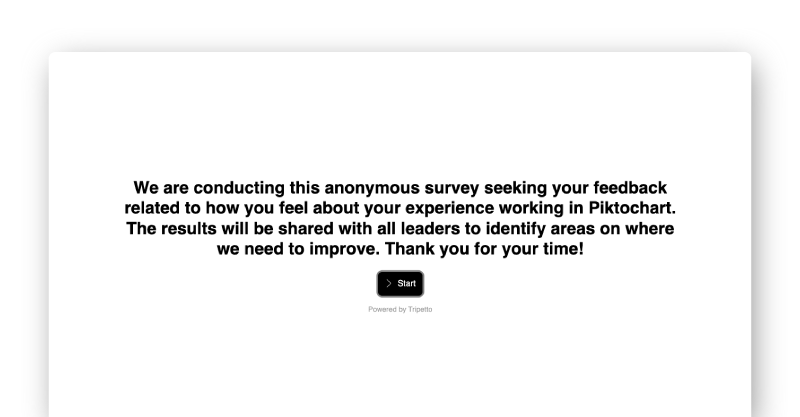
Check out Piktochart’s Engagement Survey form.
How often should you survey employees?
Piktochart runs a twice yearly engagement survey. We do not otherwise have the capacity to respond to and action on the feedback! 😁
How often you should survey employees depends on the nature and size of your organization, the specific objectives of your employee surveys themselves, and your capacity to respond to the feedback you receive. Here are some general guidelines:
Annual Employee Engagement Surveys
It’s a common practice for companies to run an in-depth employee engagement survey once a year. This gives a comprehensive overview of employee sentiments and experiences over a longer period of time, and it also allows for year-over-year comparisons.
Pulse Surveys
In addition to annual surveys, some companies opt to send out shorter “pulse” survey on a more regular basis—quarterly, monthly, or even weekly. They can track the impact of recent changes or events, monitor ongoing issues, or get timely feedback on specific topics.
Event-Driven Surveys
These are surveys sent out after specific events or changes, such as following a major company announcement, after a restructuring, or post-training. The frequency of these will depend on how often such events occur.
Keep in mind that it’s crucial not to over-survey your employees. Survey fatigue can set in if employees are asked to complete surveys too frequently, especially if they don’t see any action resulting from their feedback. For example, that was us in 2019 when we had pulse surveys for a year.

How do you increase survey response rate?
This is the dilemma in every human resources professional. How do I encourage employees to give me survey responses?
Increasing survey response rates can be challenging, but here are some strategies that can help:
1. Communicate the Purpose and Importance
Clearly communicate the purpose of the survey and why it’s important for employees to participate. Organizational leaders can highlight how their feedback will be used to drive positive changes within the organization. Emphasize that their opinions matter.
Emphasize that their opinions matter.
2. Keep the Survey Short and User-Friendly
Long and complex survey questions can deter participation. Use clear and simple language, and ensure that the survey is easy to navigate and complete.
We have done over 60 questions before, and for us, our sweet spot is about 20 questions. But we understand that there is no hard and fast rule about the number of questions.
3. Offer Anonymity and Confidentiality
Assure employees that their responses will be anonymous and confidential. This will encourage honest and candid feedback.
4. Send Reminders
Send reminder emails or notifications to employees to complete the survey. This serves as a gentle nudge and helps combat survey fatigue or forgetfulness.
5. Follow-Up and Share Results
After the survey is completed, this is the most critical part: provide timely and transparent feedback to employees.
Share the key findings and communicate the actions that will be taken based on their feedback. This demonstrates that their input is valued and can lead to increased survey participation in future surveys.

How do you analyze the survey responses?
Analyzing the results of an employee engagement survey involves several steps. Here’s a general process to follow:
1. Clean and Organize Data
Start by cleaning and organizing the survey data. Check for any missing or inconsistent responses and ensure data integrity. Remove any identifying information to maintain anonymity.
2. Quantitative Analysis
Begin by analyzing the quantitative data, which includes numerical responses such as ratings or scores. Calculate averages, percentages, and other relevant statistical measures to summarize the data.
Look for patterns. Identify trends and variations in the responses.
3. Segmentation and Comparison
Break down the data by different employee groups or demographics (e.g., departments, locations, job levels) and compare their responses. This helps identify variations in employee engagement levels and allows for targeted action plans.
4. Qualitative Analysis
Move on to analyzing the qualitative data, such as open-ended comments or suggestions. Group similar responses together and look for common themes or sentiments expressed by employees.
Take note of both positive and negative and address employee feedback first. It should be easy to see how employees feel at the time period.
5. Identify Key Findings
Based on the quantitative and qualitative analysis, identify the key findings and actionable insights that emerge from the data. These findings will help prioritize areas for improvement and guide decision-making.
6. Benchmark Comparison
If available, compare your survey results to industry benchmarks or previous survey results from your organization. This can provide additional context and insights into how your organization is performing in relation to others or over time.
How do you formulate the action plan after measuring employee engagement?
At Piktochart, we typically formulate the action through a comprehensive company-wide retrospective, involving senior leaders of all business functions. This retrospective provides a platform for reflection on the past quarter’s activities, achievements, and challenges, and sets the stage for proactive planning for the coming quarter.
During these retrospectives, action plans from the previous quarter are examined to assess completion and impact. It is an opportunity to recognize successes, learn from obstacles, and identify areas for continued focus. Any pending or ongoing actions are noted and carried forward for further attention.
Following the retrospective, the updated action plans are then communicated at an all-hands meeting. This meeting not only ensures employees understand the company’s goals and strategies for the upcoming quarter, but also provides an opportunity for input and discussion from all team members. This commitment to transparency drives employee engagement and strengthens organizational values, fostering a sense of shared ownership over the company’s direction and success.
Formulating an action plan based on the results of an employee engagement survey involves the following steps:
1. Review Survey Findings
Thoroughly review the survey findings, including both quantitative and qualitative data. Identify the key areas of strength and areas for improvement based on extensive research and on the feedback received from employees.
2. Prioritize Key Issues
Prioritize the areas that require immediate attention or have the most significant impact on employee engagement and overall organizational performance. Consider the frequency and severity of the issues identified.
3. Set Clear Objectives
Define clear objectives for each area of improvement. What specific business outcomes do you want to achieve? Ensure that the objectives are SMART (Specific, Measurable, Achievable, Relevant, and Time-bound).
4. Develop Strategies and Initiatives
Brainstorm and develop strategies and initiatives that address the identified areas for improvement. These could include changes to policies and procedures, leadership development and career advancement programs, training and development initiatives, communication improvements, or recognition programs engaged employees.
5. Assign Responsibility and Establish Accountability
Assign responsibility for each initiative to the appropriate individuals or teams within the organization. Clearly define roles, responsibilities, and timelines. Ensure that there is accountability for driving the initiatives forward.
6. Allocate Resources
Determine the resources required to implement the action plan successfully. This includes budgetary considerations, personnel, technology, and any other necessary resources.
7. Create a Timeline
Develop a timeline that outlines the sequence of actions and milestones for each initiative. This helps ensure that the plan progresses in a timely manner and allows for tracking progress and making necessary adjustments.
8. Communicate the Action Plan
Clearly communicate the action plan to all stakeholders, including employees, managers, and senior leadership. Explain the objectives, initiatives, and the expected impact of the plan on employee engagement and overall organizational success. Address any concerns or questions that may arise.
9. Implement and Monitor Progress
Begin implementing the initiatives outlined in the action plan. Monitor progress regularly, track key performance indicators, and gather feedback on the effectiveness of the implemented changes. Make adjustments as needed based on ongoing evaluation.
10. Evaluate and Refine
Periodically evaluate the impact of the action plan and make refinements as necessary. Conduct follow-up surveys or pulse surveys to improve employee engagement and gather feedback on the implemented initiatives. Use the feedback to continuously improve and refine the action plan.
Remember, an effective action plan for employee engagement is an ongoing process. It requires commitment, regular evaluation, and a company culture that of continuous improvement to ensure sustained employee engagement and organizational success.
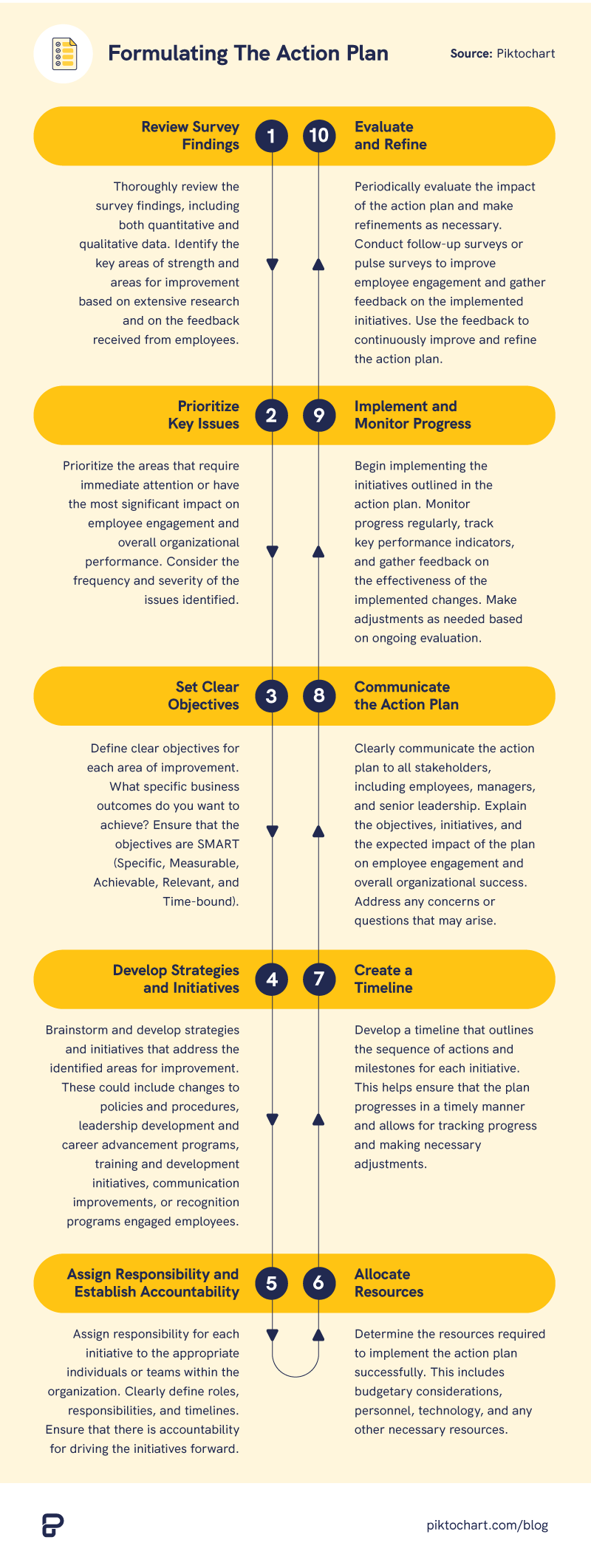
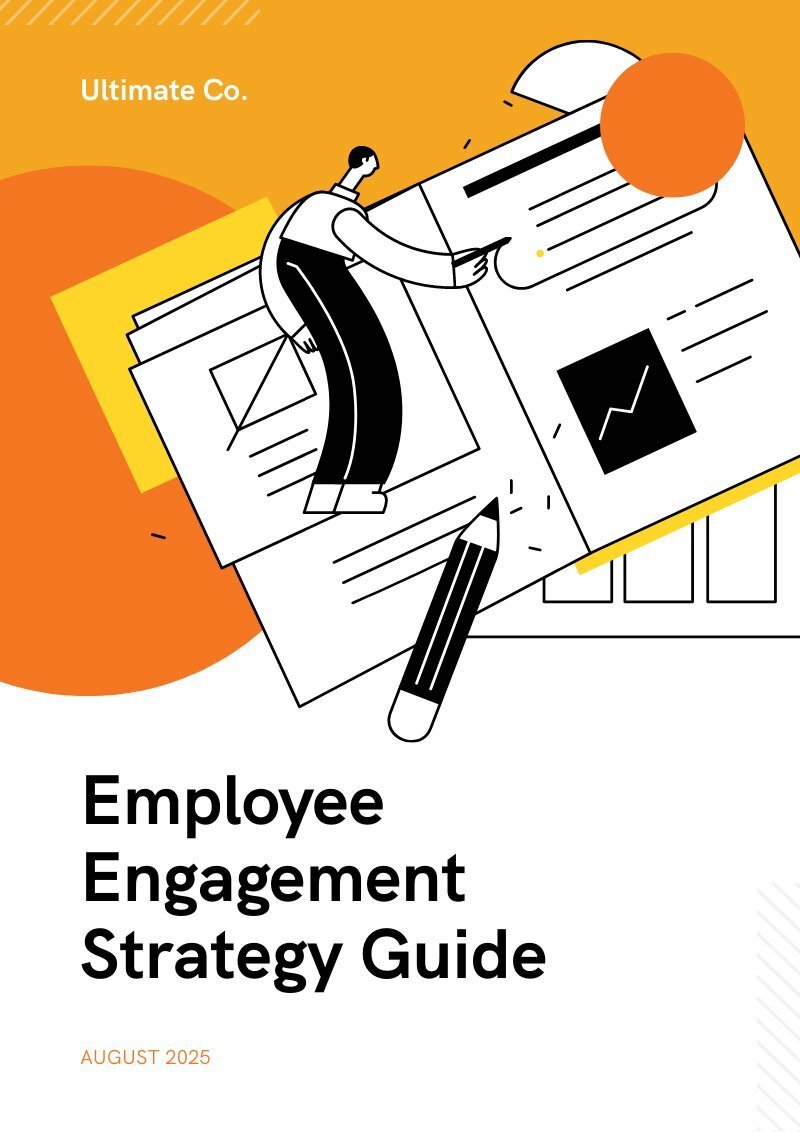
Tools for employee engagement survey
There are several tools or survey vendor available to conduct employee engagement surveys. Here are some popular ones:
1. SurveyMonkey
SurveyMonkey is a widely used online survey tool that offers a user-friendly interface and a variety of question types. It provides features for designing, distributing, and analyzing surveys. It also offers customizable templates specifically designed for employee engagement surveys.
2. Qualtrics
Qualtrics is a comprehensive employee engagement survey software platform that enables you to create and distribute employee engagement surveys. It offers advanced survey design options, robust analytics capabilities, and reporting features. It also provides options for customization and integration with other HR systems.
3. Google Forms
Google Forms is a free tool that allows you to create surveys and collect responses. It offers a range of question types, customizable themes, and the ability to export data to Google Sheets for analysis. It’s a straightforward option, especially if your organization already uses Google Workspace.
4. Culture Amp
Culture Amp is an employee feedback and analytics platform that specializes in employee engagement surveys. It offers a suite of tools for survey design, distribution, and reporting. It provides pre-built survey templates and benchmarking capabilities to compare your employee engagement survey results with industry or internal benchmarks.
5. Glint
Glint is an employee engagement platform that includes survey capabilities. It offers various survey questions and templates, real-time analytics, and reporting dashboards. It also provides features for pulse survey, action planning, and tracking the impact of initiatives on employee engagement.
6. Peakon
Peakon is an employee engagement and performance management platform that includes survey functionality. It offers customizable surveys, real-time analytics, and reporting features. It also provides features for benchmarking, action planning, and gathering continuous feedback from employees.
7. TINYpulse
TINYpulse is an employee engagement and feedback platform that includes survey tools. It offers pulse surveys, anonymous feedback options, and features for recognizing and rewarding employees. It focuses on providing insights into employee sentiment and improving employee engagement.
When choosing a tool, consider factors such as ease of use, customization options, analytics capabilities, integration with other systems, and pricing. Additionally, assess your organization’s specific needs and requirements to select the tool that best aligns with your objectives.
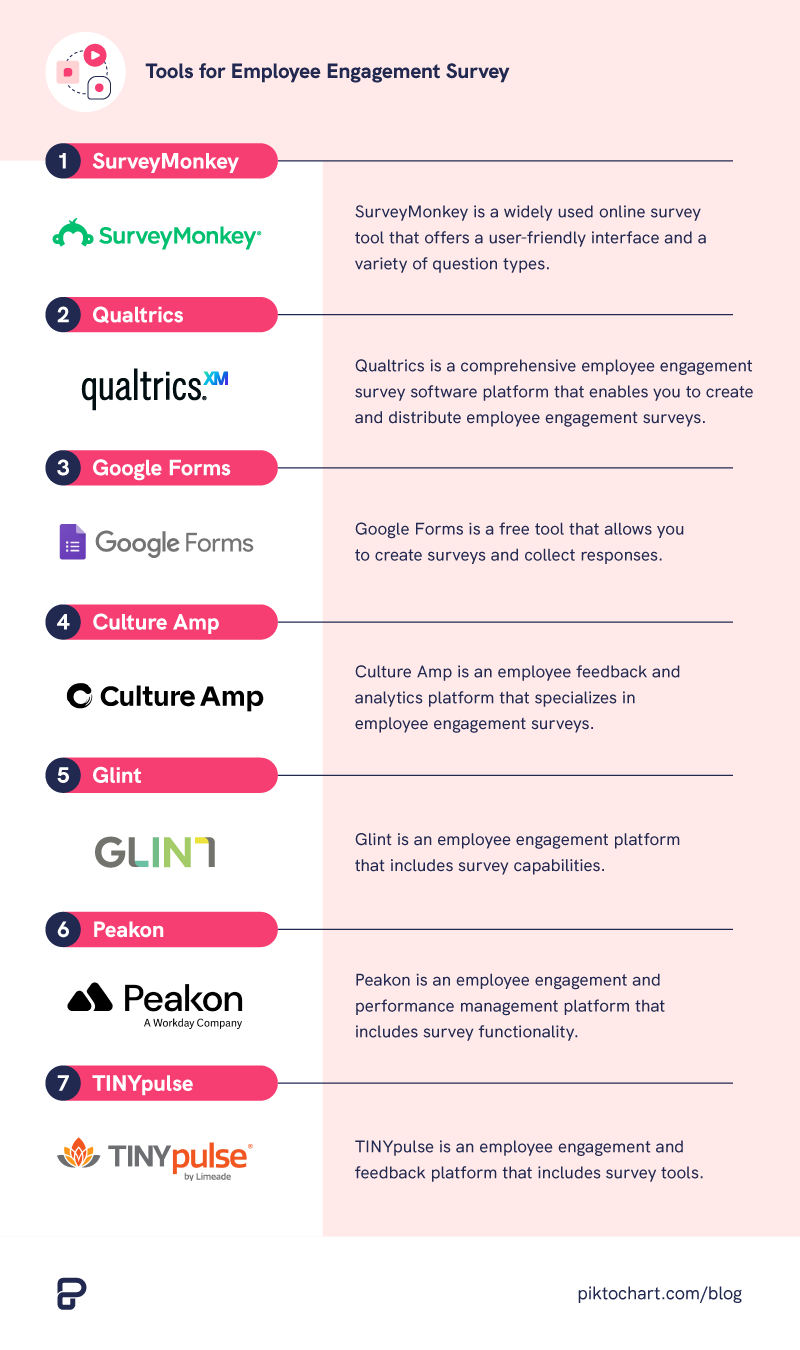
Piktochart offers professionally designed templates for all your visual communication needs. It is your one-stop shop for presentations, posters, logos, email signatures, infographics, and more. Customize all templates according to your brand assets in seconds. Get started for free today.
Free templates to visualize your employee engagement survey results


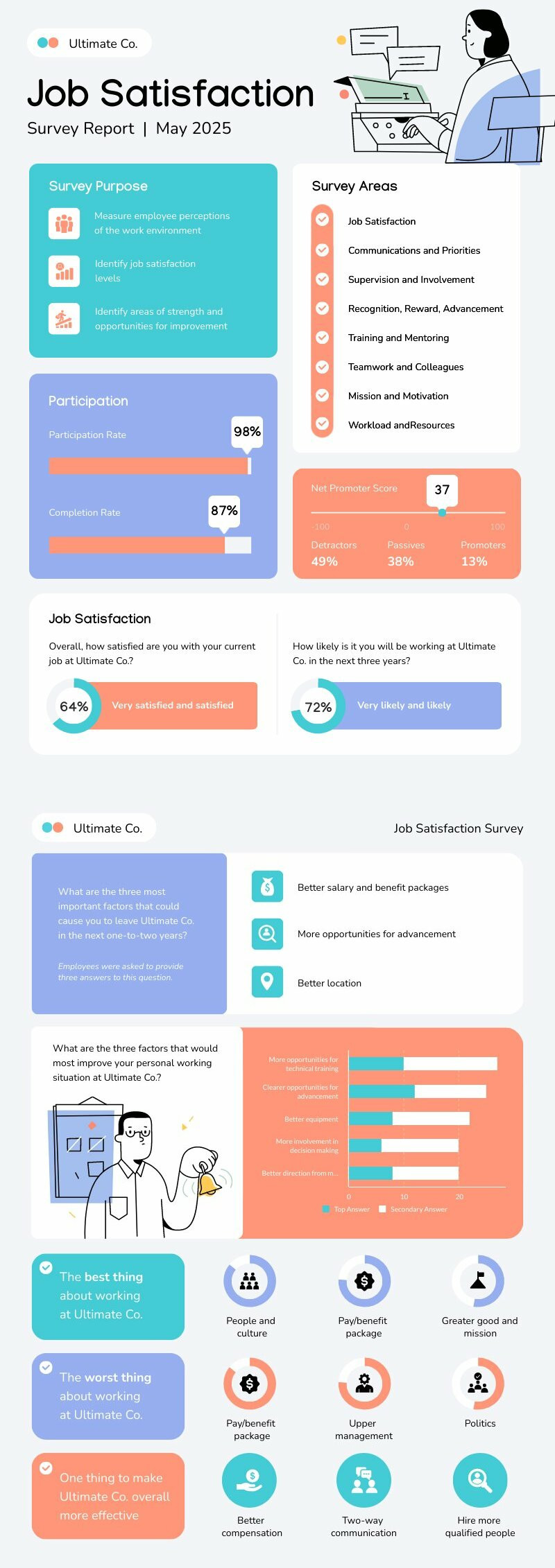


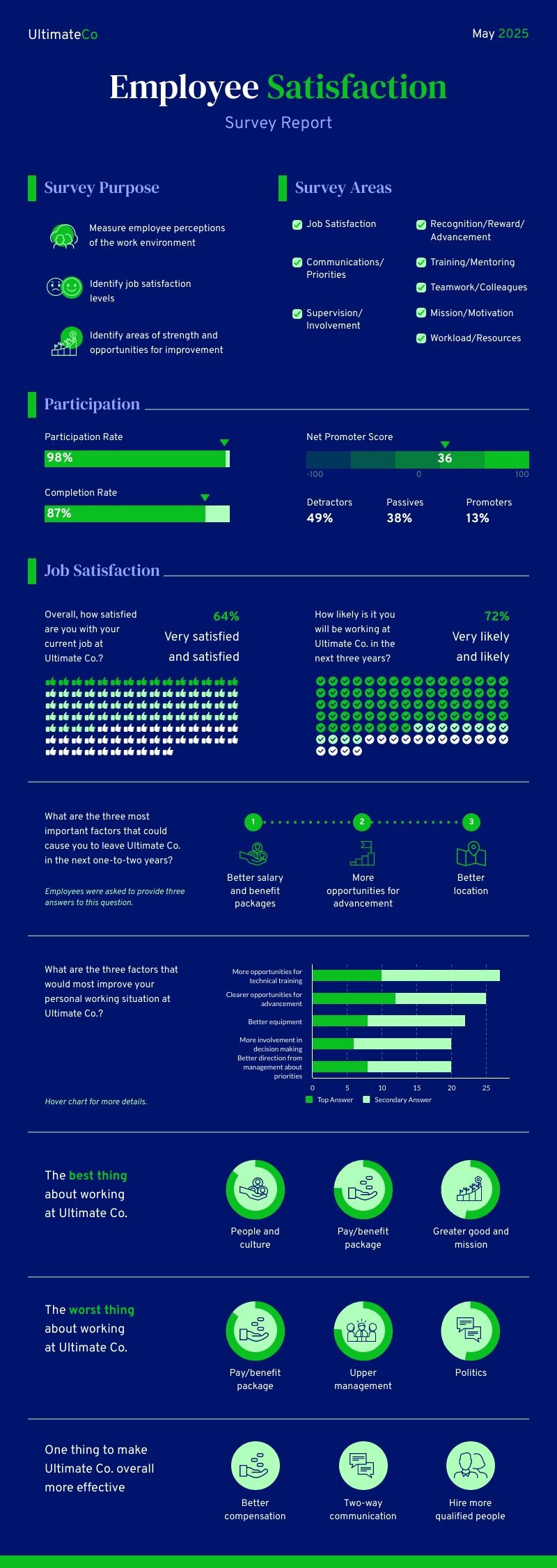


The world of work is changing fast, and a highly engaged workforce has never been more crucial. The success of an employee engagement survey in 2023 is not just about its execution or employee participation but about taking action based on the findings and communicating this back to the company.
Employee engagement should be an ongoing dialogue, leading to a culture of open communication and a streamline of efforts to continuously improve engagement.
It is my hope that with a successfully executed employee engagement survey, your organization can become more resilient, and more in tune with the needs and aspirations of its most vital asset: its people!
Transform data into insights with Piktochart!
Visualize your employee engagement survey results effortlessly.
Sign up for Piktochart now
